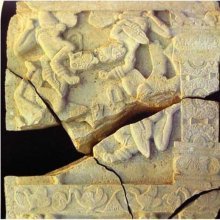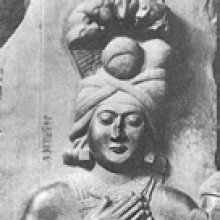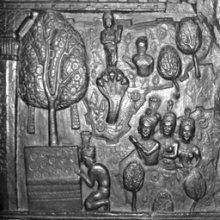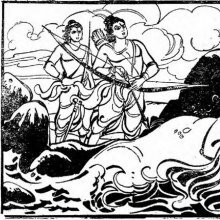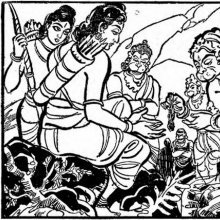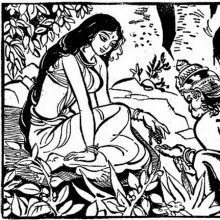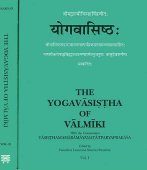Crest: 1 definition
Introduction:
Crest means something in Hinduism, Sanskrit. If you want to know the exact meaning, history, etymology or English translation of this term then check out the descriptions on this page. Add your comment or reference to a book if you want to contribute to this summary article.
Images (photo gallery)
(+12 more images available)
In Hinduism
Shilpashastra (iconography)
Source: Shodhganga: Elements of Art and Architecture in the Trtiyakhanda of the Visnudharmottarapurana (shilpa)The Crest refers to the associated decoration used for Gandharvas, following the principles of ancient Indian Painting (citra), according to the Viṣṇudharmottarapurāṇa, an ancient Sanskrit text which (being encyclopedic in nature) deals with a variety of cultural topics such as arts, architecture, music, grammar and astronomy.—In the Viṣṇudharmottarapurāṇa, the rules of Painting of different classes have been elaborately discussed. Like cloths, accessories of different character also vary in their pictures. The picture of deities and Gandharvas should be adorned with crests instead of crowns.

Shilpashastra (शिल्पशास्त्र, śilpaśāstra) represents the ancient Indian science (shastra) of creative arts (shilpa) such as sculpture, iconography and painting. Closely related to Vastushastra (architecture), they often share the same literature.
See also (Relevant definitions)
Starts with: Cresta de gallo, Crested fern, Crested hair grass, Crested prickle poppy, Crested prickly poppy, Crested pricklypoppy.
Full-text (+580): Shikha, Sekhara, Cudamani, Siromani, Mukuta, Kirita, Avatamsa, Makuta, Uttamsa, Cula, Culin, Shikhamani, Cuda, Avacuda, Piccha, Shikhishekhara, Shikhishikha, Sushikha, Shiragira, Culamani.
Relevant text
Search found 143 books and stories containing Crest; (plurals include: Crests). You can also click to the full overview containing English textual excerpts. Below are direct links for the most relevant articles:
Brihat Samhita (by N. Chidambaram Iyer)
Cosmetics, Costumes and Ornaments in Ancient India (by Remadevi. O.)
2.1. Head Ornaments (e): Paṭṭa < [Chapter 3 - Ornaments]
2.1. Head Ornaments (d): Cūḍāmaṇi < [Chapter 3 - Ornaments]
2.1. Upper Garments (a): Head Dress: Veṣṭana < [Chapter 2 - Costumes]
Trishashti Shalaka Purusha Caritra (by Helen M. Johnson)
Part 2: Story of the cocks < [Chapter IV - Tenth incarnation as Megharatha]
Part 1: Prasenajit in Kuśāgrapura < [Chapter VI - Adoption of right-belief by Śreṇika]
Part 3: Ara’s parents (king Sudarśana and queen Devī) < [Chapter II - Śrī Aranāthacaritra]
Animal Kingdom (Tiryak) in Epics (by Saranya P.S)
The Myths Of The North American Indians (by Lewis Spence)
The Indian Buddhist Iconography (by Benoytosh Bhattachacharyya)
Related products
